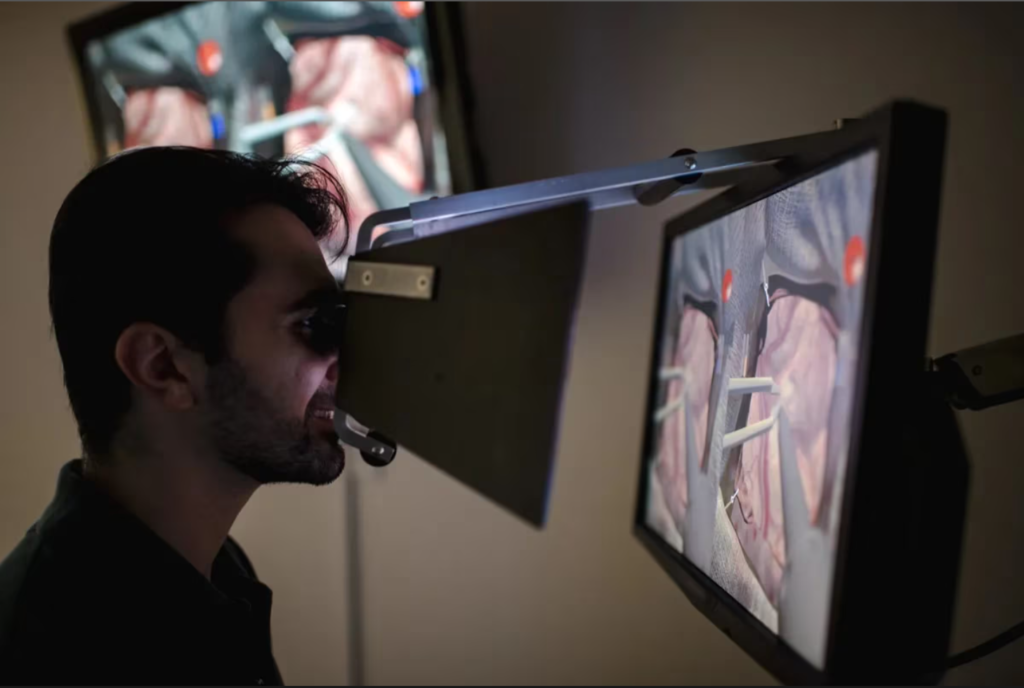

For novice brain surgeons, AI offers a way to practise on virtual grey matter before the real stuff
by Eric Andrew-Gee
The tumour is ugly: vivid yellow-white, sticky, and in a particularly delicate part of the brain. Worse, it is shot through with evil-looking blood vessels. The surgical resident approaches confidently, but one wrong move could mean disaster.
Fortunately, the tumour is fake, a simulation produced by a computer in a lab at McGill University. Only the resident is real.
Dr. Abdulrahman Almansouri has received part of his training this way, “operating” on an AI-powered machine that has created probably the world’s most lifelike experience of neurosurgery outside of an OR.
The project is the baby of Rolando Del Maestro, a retired brain surgeon at the renowned Montreal Neurological Institute, who has operated on around 5,000 tumours over the course of his career, and still wishes he could have done a couple thousand morein virtual reality. He believes people in his field should be more like pilots: trained and kept sharp on simulators so that learning their skills doesn’t endanger the lives of passengers – or in his case, patients.
The seemingly intuitive idea has been slow to gain widespread acceptance, partly because of technical challenges, but also because of the profession’s proud, tradition-bound culture. “In neurosurgery we accept the idea that people are competent,” said Dr. Del Maestro. “They train for six years, and they take an exam and they’re competent. The reality is that’s not true.”
Published in September 2023
Link to original article here
